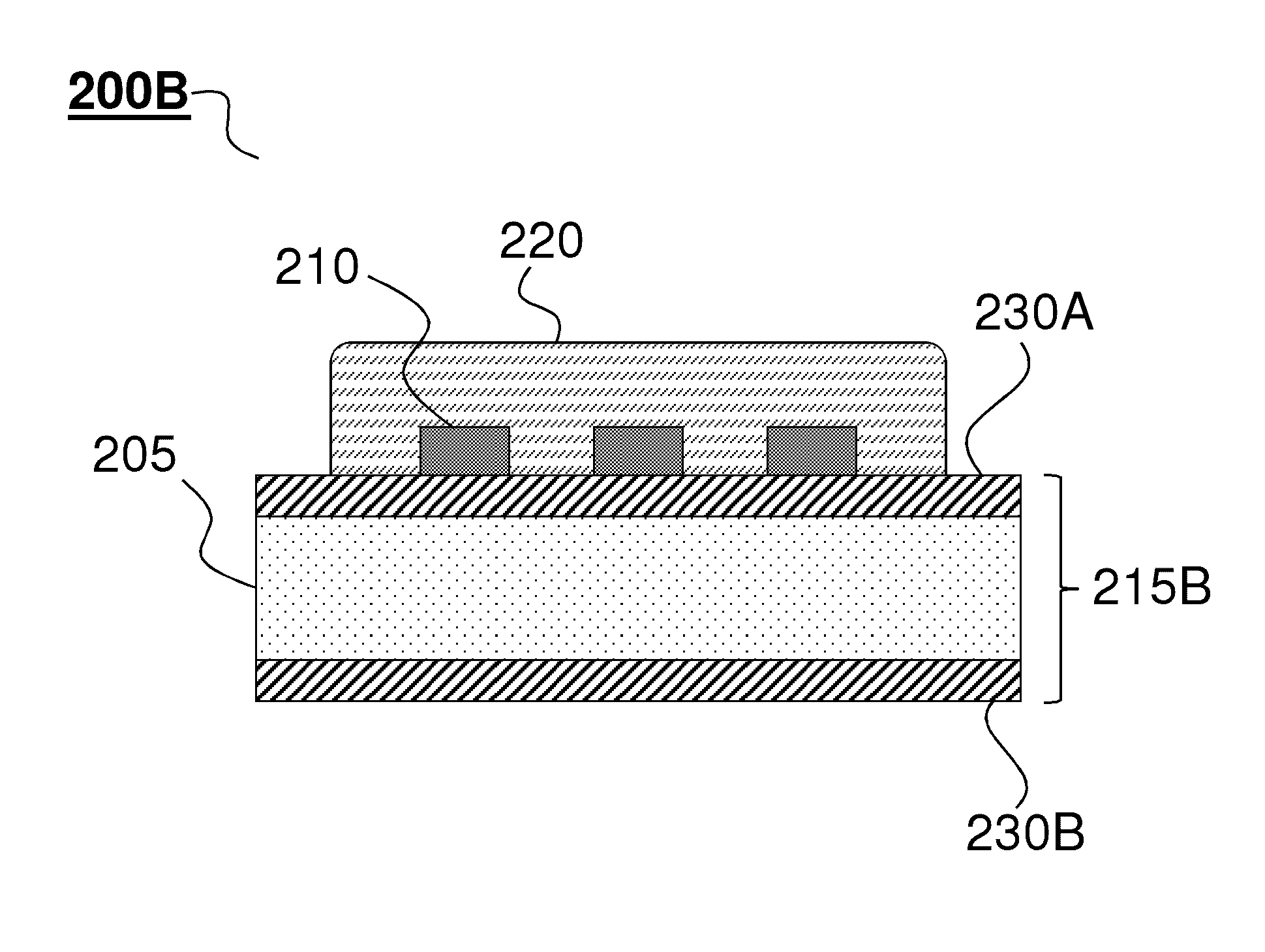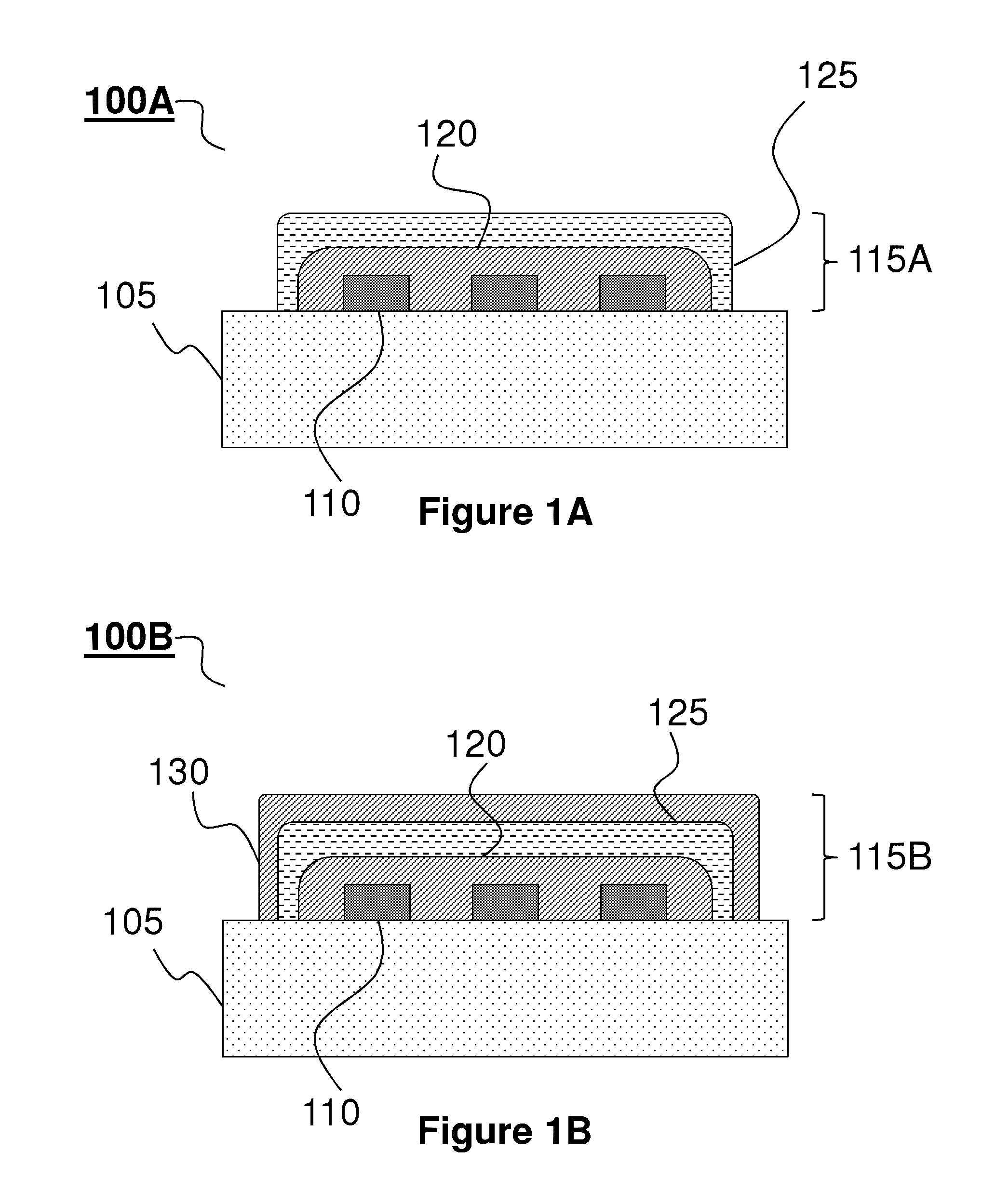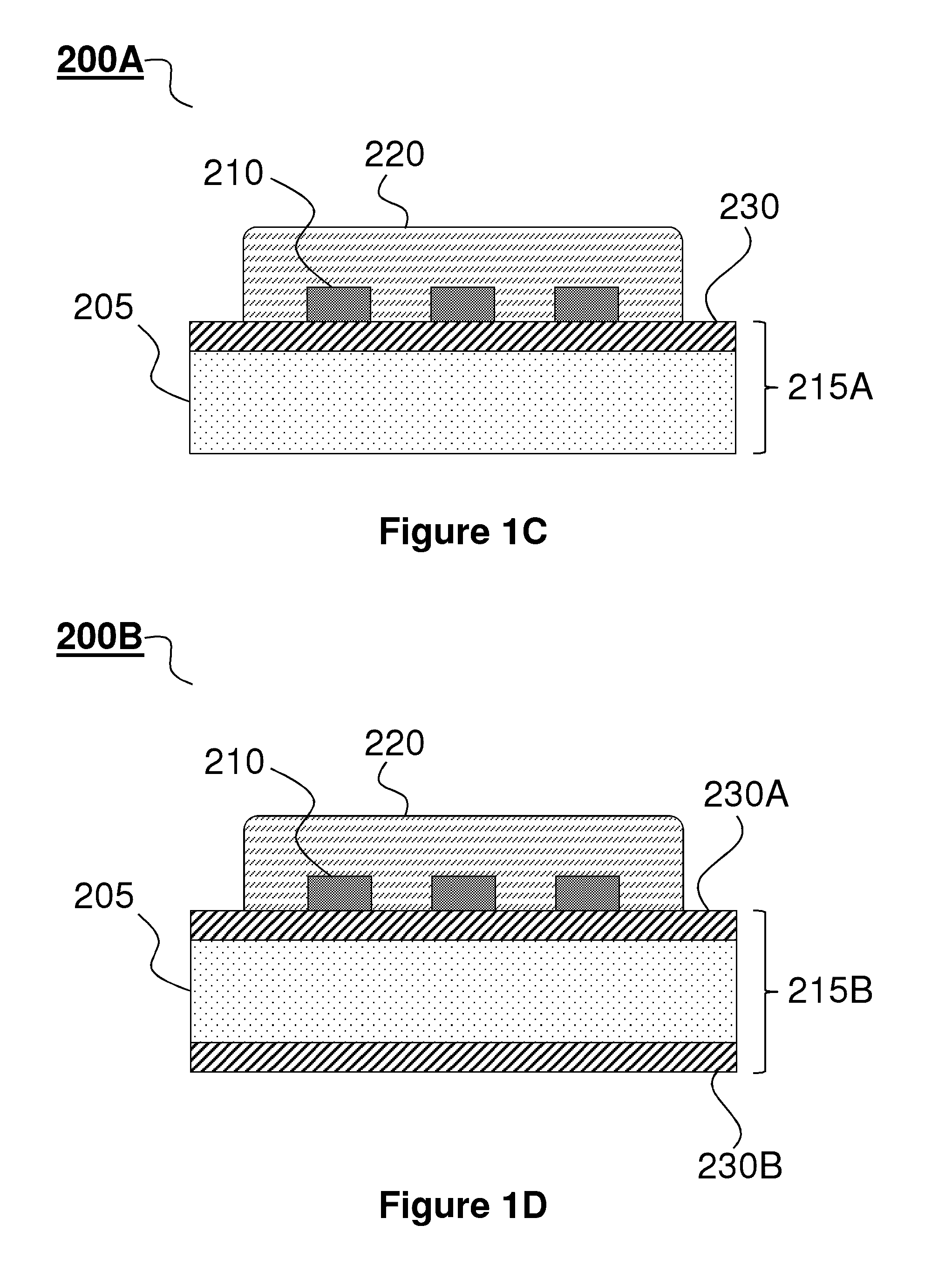Transient electronic devices comprising inorganic or hybrid inorganic and organic substrates and encapsulates
a technology of electronic devices and substrates, applied in the direction of hermetically sealed casings, instruments, and device details, can solve problems such as leakage of vapors or fluids, and achieve the effect of effective device fabrication
- Summary
- Abstract
- Description
- Claims
- Application Information
AI Technical Summary
Benefits of technology
Problems solved by technology
Method used
Image
Examples
example 1
Inorganic Substrates and Encapsulation Layers for Transient Electronics
Background and Motivation
[0138]This example demonstrates a new class silicon-based electronic devices that are physically transient, for example, in the sense that they dissolve or otherwise transform at controlled rates when exposed to water in the environment or the body[1]. In some embodiments, these systems comprise transient materials, such as magnesium for metal electrodes and interconnects, MgO and / or SiO2 for gate and interlayer dielectrics, and single crystal silicon nanomembranes (Si NMs) for semiconductors. In all cases, extensive engineering studies of the key properties, including dissolution mechanisms[2], for each material are important for device engineering. On-going research indicates the ability to enhance / control the dissolution rates of transient components via control over the morphology and chemical compositions of the various functional layers. Additionally, the properties of the aqueous e...
example 2
Inorganic Substrates and Encapsulation Layers for Transient Electronics
[0147]FIG. 6 shows dissolution kinetics of SiO2 in aqueous solution at different pH and temperature (1) SiO2 thermally grown by dry or wet oxidation, (2) SiO2 deposited by plasma enhanced chemical vapor deposition and (3) SiO2 deposited by electron beam evaporation. Calculated (lines) and experimental (symbols) dissolution rates of silicon oxides in buffer solution at different pH (black, pH 7.4; red, pH 8; blue, pH 10; magenta, pH 12) at room (left) and physiological (right, 37° C.) temperature. The thickness was measured by spectroscopic ellipsometry. There was no difference is dissolution rates between thermally grown SiO2 grown by the dry or wet oxidation method.
[0148]FIG. 7A shows measured data (symbols) and numerical fits (lines) for pH-dependent dissolution kinetics of oxides (black, tg-oxide by dry oxidation; red, tg-oxide by wet oxidation; blue, PECVD oxide; magenta, E-beam oxide) at room temperature and...
example 3
Dissolution Behaviors and Applications of Silicon Oxides and Nitrides in Transient Electronics
Background and Motivation
[0172]Silicon oxides and nitrides are key materials for dielectrics and encapsulations in a class of silicon-based high performance electronics that has the ability to completely dissolve in a controlled fashion with programmable rates, when submerged in bio-fluids and / or relevant solutions. This type of technology, referred to as ‘transient electronics’, has potential applications in biomedical implants, environmental sensors and other envisioned areas. The results presented here provide comprehensive studies of transient behaviors of thin films of silicon oxides and nitrides in diverse aqueous solutions at different pH scales and temperatures. The kinetics of hydrolysis of these materials primarily depends on not only pH levels / ion concentrations of solutions and temperatures, but also morphology and chemistry of films determined by the deposition methods and cond...
PUM
| Property | Measurement | Unit |
|---|---|---|
| thickness | aaaaa | aaaaa |
| porosity | aaaaa | aaaaa |
| porosity | aaaaa | aaaaa |
Abstract
Description
Claims
Application Information
 Login to View More
Login to View More - R&D
- Intellectual Property
- Life Sciences
- Materials
- Tech Scout
- Unparalleled Data Quality
- Higher Quality Content
- 60% Fewer Hallucinations
Browse by: Latest US Patents, China's latest patents, Technical Efficacy Thesaurus, Application Domain, Technology Topic, Popular Technical Reports.
© 2025 PatSnap. All rights reserved.Legal|Privacy policy|Modern Slavery Act Transparency Statement|Sitemap|About US| Contact US: help@patsnap.com



